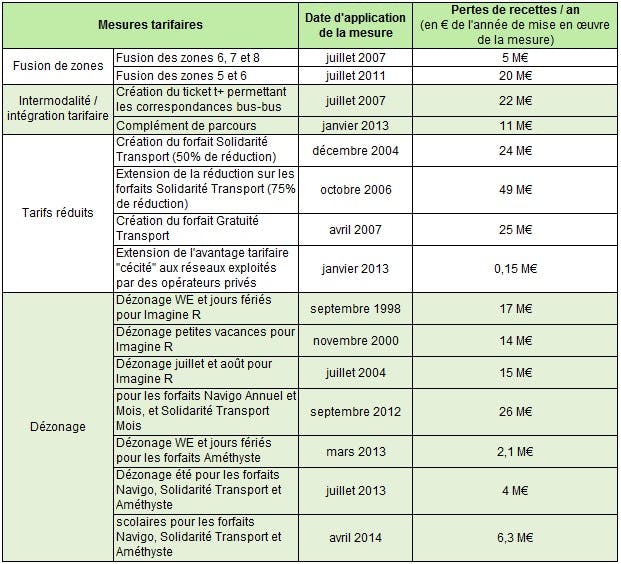The principles of contracting between Île-de-France Mobilités (formerly STIF) and transport operators
Île-de-France Mobilités, which defines the organisation of public transport, the offer and the fares, contracts with the companies that operate the networks. These contracts define in particular the level of supply, the quality of service requirements, as well as the remuneration received by the operators, which must cover operating costs and include a reasonable margin.
As part of the negotiation of contracts, Île-de-France Mobilités and the carriers agree on the amount of annual operating costs corresponding to the level of supply desired by Île-de-France Mobilités, and then on an annual revenue target, defined on the basis of the traffic observed for the various tickets on the carrier's network. The difference between the amount of operating expenses and this fare revenue target is made up by a contribution from Île-de-France Mobilités.
The revenue target is a "volume" target, the comparison between the revenue target and the actual revenue is made on the basis of the price of the tickets at the time the contract is signed, to remove the "price" effect, i.e. the direct effect on revenue of the fare increases decided by Île-de-France Mobilités.
Any difference between the revenue target and the fare revenue achieved is shared between Île-de-France Mobilités and the carrier: if the actual revenue is higher than the revenue target, part of the surplus reduces Île-de-France Mobilités' contribution; if the actual revenue is below the target, Île-de-France Mobilités will cover part of the loss by increasing its contribution. This risk-sharing mechanism makes it possible to interest the carrier in the revenues.
Even if fare revenues do not pass through the budget, Île-de-France Mobilités exercises a strong control over these revenues and is aware of the volume of direct revenues received by each of the transport operators, and whether or not the revenue target set in the contracts has been reached.
Compensation for loss of revenue
Some of the pricing measures taken by Île-de-France Mobilités, when they lead to a reduction in fares for certain categories of subscribers, or to an increase in fare integration, result in a loss of revenue for carriers: where users used to buy full-fare tickets, they now buy tickets at a reduced rate; where they used to buy one ticket per journey, the creation of intermodal tickets allowing them to make more connections or to make an unlimited number of journeys (BU, t+ tickets, zonal passes, etc.) allows some of them to save money, etc.
These decisions change the baseline situation on the basis of which the revenue target was set. Île-de-France Mobilités and the carriers then agree in advance on the financial impact of these decisions (estimation of the amount of revenue losses based on data relating to the mobility of public transport users according to the tickets used), and Île-de-France Mobilités compensates by a corresponding amount, by reducing the revenue target and increasing its contribution.
Conversely, when fare measures are favourable to carriers, the resulting increase in revenue is deducted from the contribution of Île-de-France Mobilités.
